7/25/2025

AB
How to Improve Business Operations: A Practical Guide
Discover practical strategies no how to improve business operations. Streamline workflows, empower teams with real-time data, and build resilience today!
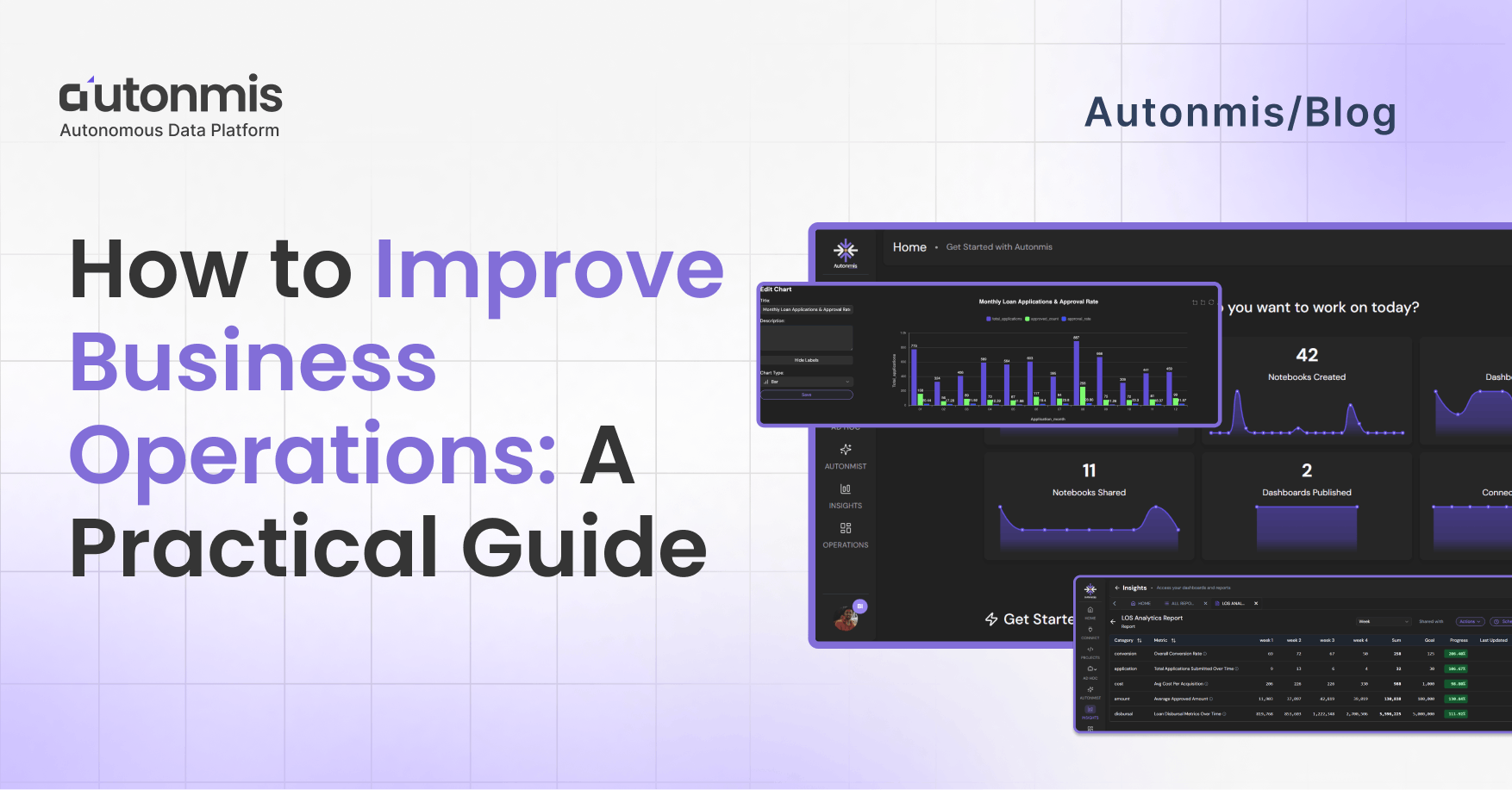
Improving the way your company runs day to day isn’t about chasing the latest tech buzzwords, it’s about making real work easier, faster, and more reliable for the people actually doing it. In this guide on Improving Business Operations, we’ll walk through different strategies on how to improve business operations, you can start using today to smooth out processes, keep teams aligned, and build a more resilient operation.
1. Map Out and Simplify Key Workflows
“You can’t fix what you don’t understand.”
- Sketch the Journey: Gather your team and draw a simple flowchart for a core process whether that’s handling a customer order, processing invoices, or releasing a new feature.
- Listen for Friction: Ask folks on the front lines where delays or mistakes happen. Often the biggest slowdowns come from small, recurring hassles.
- Trim the Fat: Find steps that don’t add real value - duplicate approvals, manual data re‑entry, email back‑and‑forth and look for quick ways to eliminate or streamline them.
- Create Clear SOPs: Write down how things should run. When everyone follows the same playbook, it’s easier to train new people and spot when something goes off track.

Checkout: What Is an Operations Intelligence Layer? A Better Alternative to Dashboards
2. Give Teams Fresh, Real‑Time Information
“The right data at the right time beats a thick report in your inbox.”
- Live Views Over PDF Dumps: Instead of weekly status spreadsheets, set up dashboards that update automatically whenever data changes. That way, you’re always looking at today’s numbers, not last week’s.
- Self‑Serve Access: Let finance, marketing, and product teams pull the reports they need without wrangling the data team every time. A simple drag‑and‑drop chart builder can do wonders.
- Proactive Alerts: Choose a few critical measures like late shipments or low stock levels and get notified as soon as they slip out of range. Catching problems early gives you breathing room to fix them.
3. Break Down Department Walls
“Great operations are a team sport.”
- Shared Workspaces: When marketing, sales, product, and finance all see the same data in one place, it’s easier to ask questions (“How did our West Coast shipments trend last month?”), spot issues, and suggest tweaks on the fly.
- Roll Out Changes Thoughtfully: Whenever you’re introducing a new tool or tweaking a process, hold quick training sessions, provide clear how‑to guides, and ask a few champions in each department to pilot and refine the change.
- Keep a Regular Pulse: A brief, weekly check‑in focused on key metrics, blockers, and what’s coming up - turns good ideas into action. Let your dashboard automatically build the agenda so the meeting stays on track.
4. Track the Metrics That Matter
“Measure what matters.”
- Say No to Vanity Metrics: Skip total clicks and raw pageviews. Instead, track:
- Cycle Time: How long does a request take from start to finish?
- Error Rate: What percentage of orders or reports needs correcting?
- Utilization: How much of your team’s time goes toward truly value‑add work?
- Set Clear Targets: Aim for specific, measurable goals, like boosting on‑time delivery from 92% to 97% by the end of Q4.
- Compare with Peers: If you can, find industry benchmarks whether from published reports or partner conversations and see where you stand.
- Automate Scorecards: Let your live dashboards feed into a central “control tower” of KPIs that updates itself. Share links so stakeholders can check status any time, without waiting for a manual report.
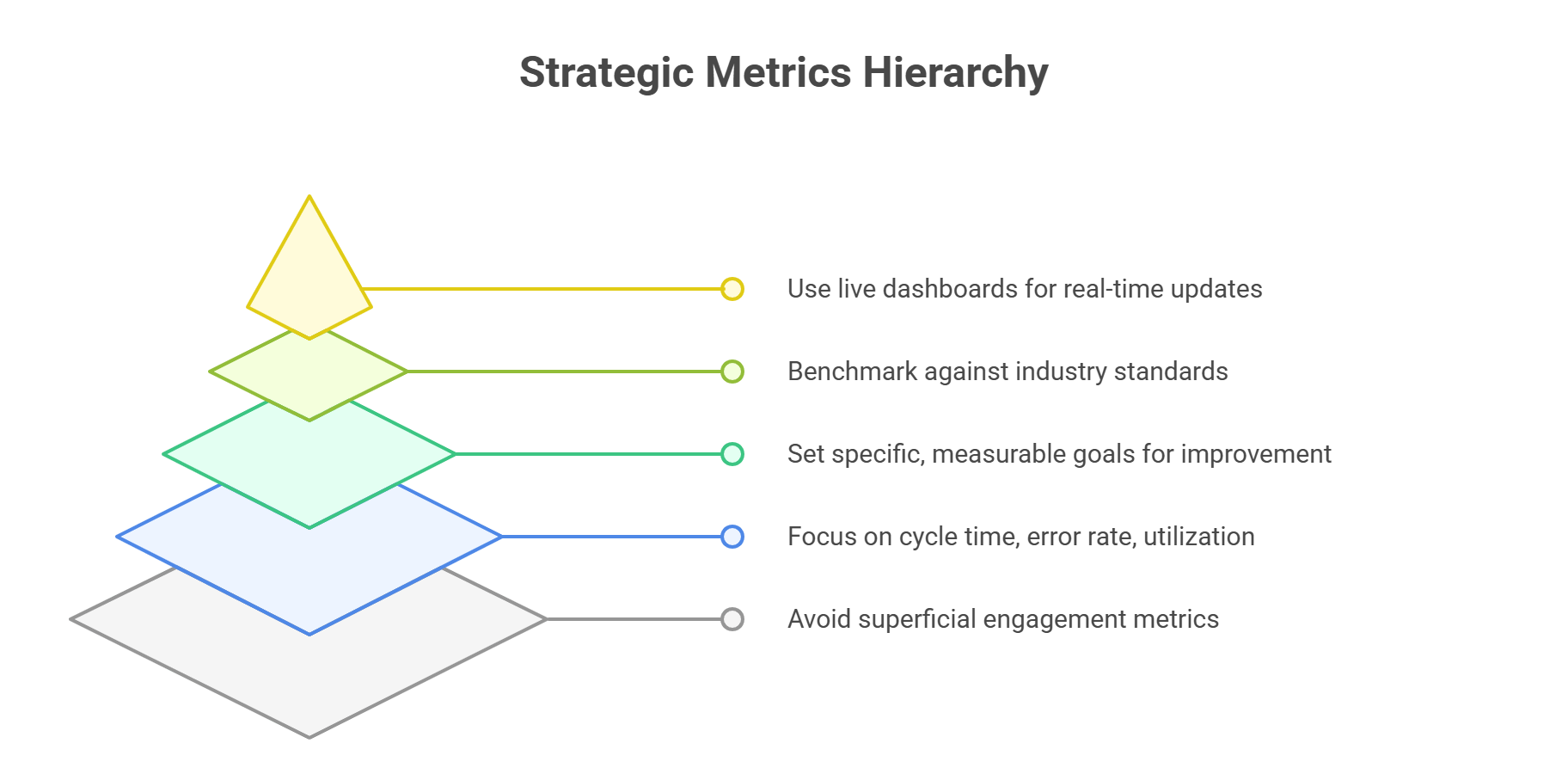
Checkout: How Business Intelligence Helps Improve Decision Making
5. Build a Culture of Ongoing Improvement
“Small changes add up.”
- Encourage Ideas: Set up a simple channel - maybe a shared inbox or quick web form—where anyone can suggest a tweak or flag a recurring hiccup. Recognize great ideas, and you’ll see more of them.
- Learn from Each Cycle: After big launches or quarterly reviews, hold a short “retrospective” to capture lessons learned. Feed those takeaways back into your process guides and onboarding materials.
- Invest in People: Offer hands‑on sessions on data basics, how to read dashboards, and the tools your teams rely on. Even a little up‑skilling goes a long way toward true Business Operations Efficiency.
6. Factor In Risk and Sustainability
“Good operations weather the storm.”
- Watch Your Supply Chain: Track supplier performance metrics, lead times, and risk flags so you spot potential shortages or quality issues before they hit you.
- Track Compliance and ESG: Build a few dashboards around environmental, social, and governance indicators like carbon per shipment and automate routine reports for auditors.
- Model “What‑If” Scenarios: Use simple scripts or spreadsheet models to see what happens if a port shuts down or tariffs shift. That way, when the unexpected strikes, you’re ready with a plan.
Putting It All Together with Autonmis
Autonmis isn’t just another analytics or dashboard tool it’s a data‑native business ops platform that empowers non‑technical teams to:
- Build live, contextual data apps for any business unit (sales, marketing, supply chain, loan ops, and more).
- Automate entire pipelines from data ingestion to report delivery using low‑code visual builders.
- Interact with AI through a Business Copilot chatbot and notebook assistant for fast insights.
- Operate in one unified surface: observe real‑time status, analyze trends, act on alerts, and share reports without constant SQL requests.
By combining low‑code/no‑code pipelines, robust scheduling, embedded AI, and live dashboards, Autonmis helps you transform your business operations into a single, action‑ready control tower. The result? Faster decision cycles, fewer manual errors, and a truly collaborative, data‑driven culture.
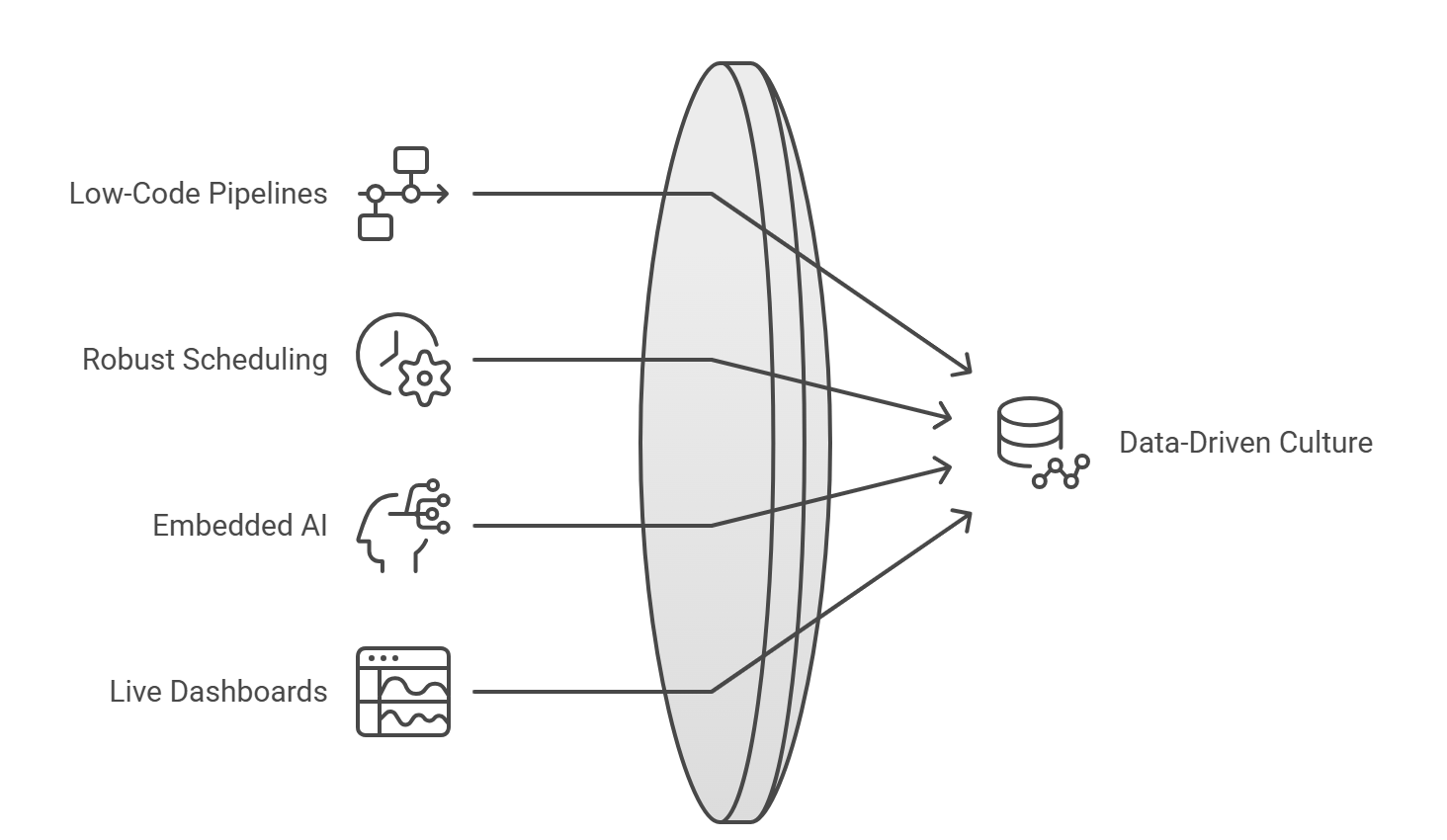
Checkout: What is Operational Visibility in Business?
Conclusion
When you combine clear process maps, live data streams, cross‑team collaboration, sharp metrics, an improvement mindset, and risk awareness, you transform your operations into a well‑tuned engine. And by choosing a unified platform where pipelines, dashboards, alerts, and reporting live side by side - you give everyone a single source of truth. That means faster decisions, fewer mistakes, and a culture that’s always looking forward.
Next Steps:
- Audit your biggest headaches. Pick your top three - whether it’s slow approvals, data gaps, or alert overload.
- Run a small pilot. Try the new approach in one team for 30 days and measure the lift.
- Scale up. Share your wins, roll out to other groups, and keep iterating.
Your operations are the engine of your business, it’s time to tune them for peak performance.
Recommended Learning Articles
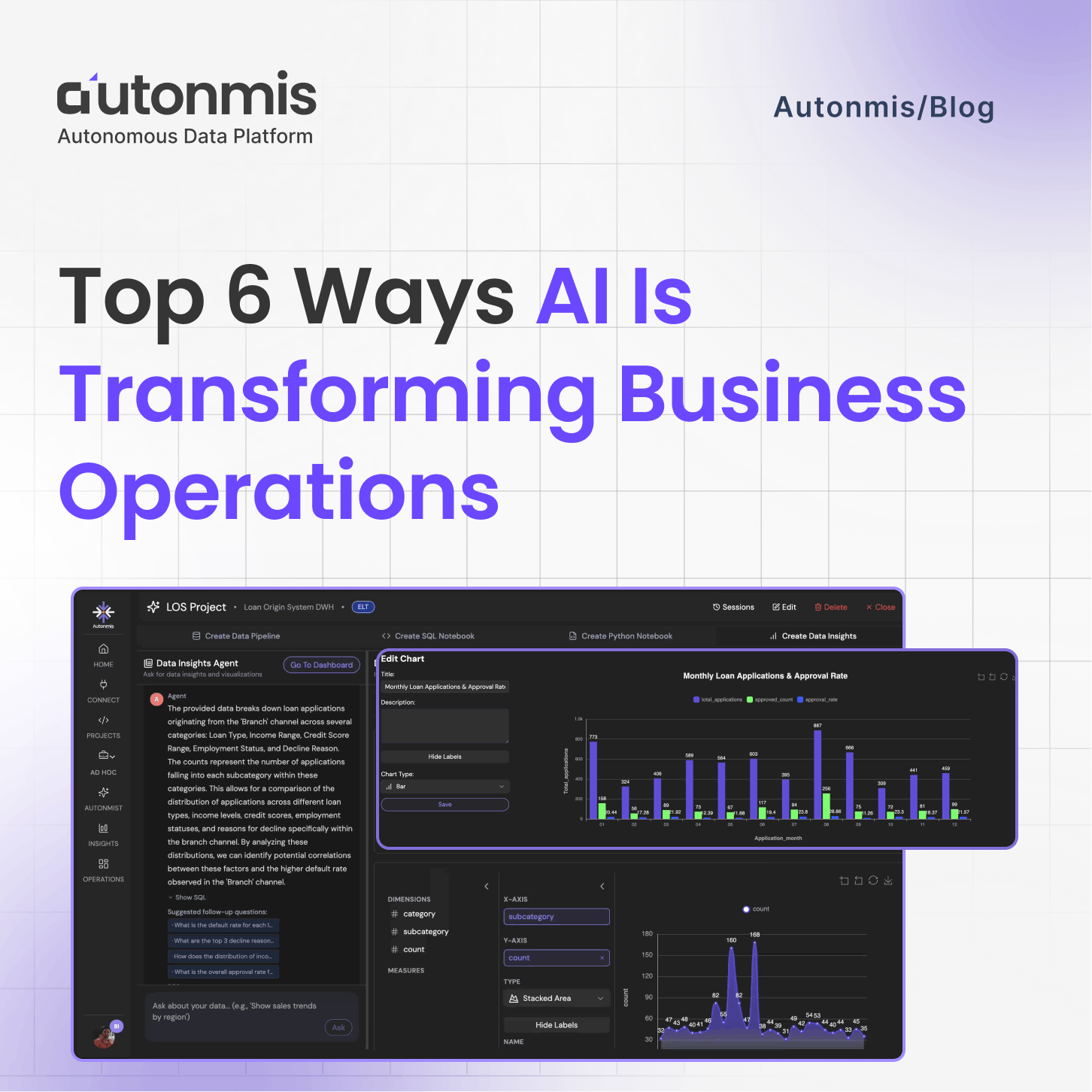
10/23/2025
Top 6 Ways AI Is Transforming Business Operations
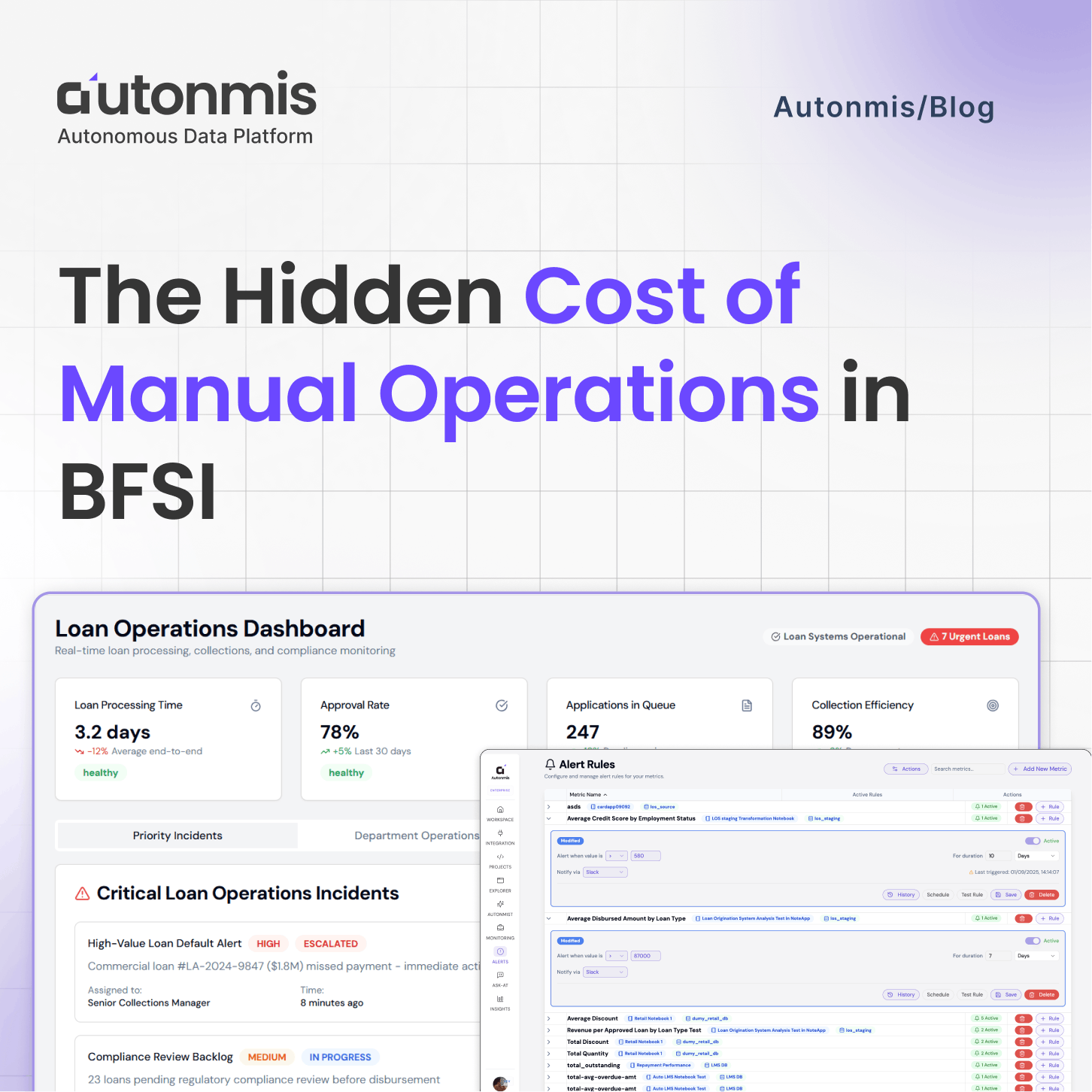
9/22/2025

AB
The Hidden Cost of Manual Operations in BFSI
Actionable Operational Excellence
Autonmis helps modern teams own their entire operations and data workflow — fast, simple, and cost-effective.